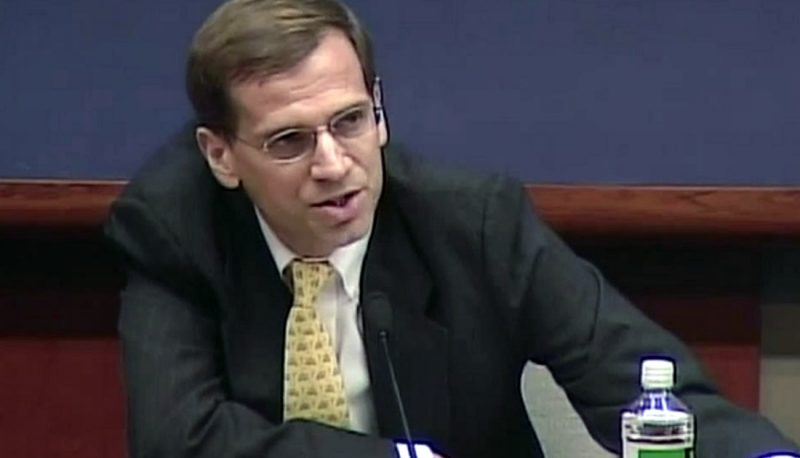“Confirmed Judges, Confirmed Fears” is a blog series documenting the harmful impact of President Trump’s judges on Americans’ rights and liberties. Cases in the series can be found by issue and by judge at this link.
Trump D.C. Circuit judges Greg Katsas and Neomi Rao voted to approve execution procedures designed by Trump’s Department of Justice (DOJ), boosting the Trump administration’s effort to resume federal executions. The April 2020 decision was in In re: Federal Bureau of Prisons Execution Protocol Cases.
According to a law enacted by Congress in 1994, when and if the federal government imposes the death penalty, the executions must be implemented “in the manner prescribed by the law of the State in which the sentence is imposed.” Several federal executions under the law took place in the 2000s, but the drug used by the federal government for executions became largely unavailable after 2011, and federal executions halted, as DOJ surveyed state practices and considered alternatives. The Trump administration decided to resume the implementation of the federal death penalty, and took the position that the law means only that the federal government must follow “a state’s choice among execution methods, such as hanging, electrocution, or lethal injection.” In 2019, Trump Attorney General William Barr approved a specific protocol that called for pentobarbital, a drug used in some states, to be the exclusive drug used for federal executions, and DOJ set execution dates for four people in federal prison.
Each of the prisoners sought a preliminary injunction against the executions in November 2019. The district court granted the injunction, concluding that the individuals were likely to succeed in showing that DOJ had violated the 1994 law by mandating a “single implementation procedure,” rather than deferring to individual state “decision-making authority” on the specifics of implementation, including details on which drugs should be used and how. DOJ appealed.
By a 2-1 vote in an unsigned opinion by Katsas and Rao, the D.C. Circuit reversed the district court. Katsas and Rao strongly disagreed with each other on the rationale for the decision, as reflected in concurring opinions that each filed. Katsas essentially accepted the Trump DOJ’s position that the 1994 law meant only that it must use the same overall method of execution – in the case of these four people, lethal injection – that the states use.
Rao strongly disagreed, explaining that the Katsas/DOJ interpretation was “ahistorical” and “flatly inconsistent” with accepted principles of statutory interpretation. In her view, the term “in the manner prescribed by the law of the State” meant not only the overall method of execution, but also any specific details such as the type of drugs that are specified in state statutes or regulations, as opposed to more informal state execution protocols. In her view, the federal protocol was broad enough to allow the government to alter the specifics of the method of execution through a “carveout” if state statutes or regulations so specify, so she also voted to reverse the preliminary injunction.
Judge David Tatel dissented and would have upheld the preliminary injunction. He agreed with much of Rao’s critique of the Katsas/DOJ position, but explained that her carveout position was inconsistent with DOJ’s view, and that the protocol in fact “contains no such carveout.” The proper interpretation of the 1994 law, he went on, was the district court’s view that federal executions must be implemented using the “same procedures that states use to execute their own prisoners,” including procedures “set forth not just in statutes and regulations, but also in protocols issued by state prison officials pursuant to state law.” The federal protocol is thus “contrary” to the 1994 law, he concluded, and should be vacated.
After explaining in detail the defects in Rao’s analysis, Judge Tatel noted that the history of the 1994 law shows conclusively that if Congress had wanted to enact a law that allowed DOJ to simply choose the overall method of execution used by states, “it knew exactly how to do so” because of Barr himself. The year before the 1994 law, when Barr was Attorney General the first time, he issued a temporary regulation that set forth lethal injection as the method to conduct federal executions, similar to his 2019 protocol. Even though Barr’s approach was recommended to Congress in 1994, Tatel pointed out, “Congress didn’t choose to pursue that known and readily available choice.” Congress’ actual choice, he concluded, “must be given effect rather than disregarded.”
The panel’s decision will not immediately lead to federal executions; the court sent the case back to the district court for further proceedings, and it is quite likely that the full D.C. Circuit will be asked to reconsider the case. But Katsas and Rao’s views remain extremely troubling. As one commentator explained:
In [Katsas’] view, the “important governmental and public interest in the timely implementation of capital punishment” is a more substantial harm than the possibility that an execution method is impermissible… It’s well in keeping with the Trump administration’s desire to speed these executions along, regardless of consequence.

